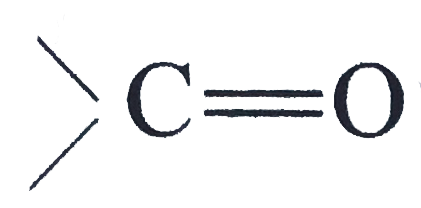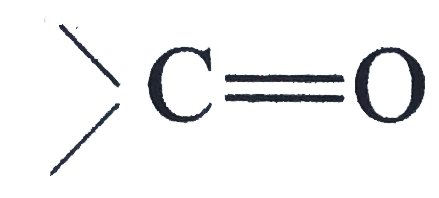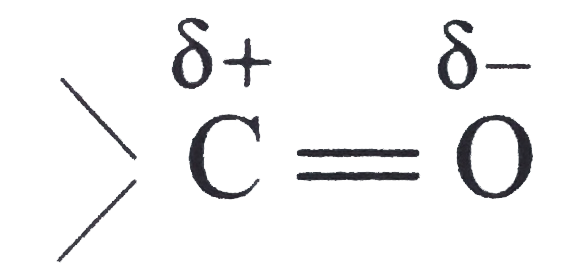Among the given compounds, the most susceptible to nucleophilic attack at the carbonyl group is:
CH3CH2CH2CH2COOC2H5
C6H5COOC2H5
C6H11CH2COOC2H5
C6H5CH2COOC2H5
The correct Answer is:B
To determine which compound is most susceptible to nucleophilic attack at the carbonyl group, we need to analyze the structures of the given compounds and assess the factors that influence nucleophilic attack, particularly the charge density at the carbonyl carbon.
1. Identify the Compounds:
We have four compounds to analyze. Let's denote them as:
- Compound A: C4H9C11O C2H5
- Compound B: C6H5C(=O)C2H5
- Compound C: C6H11CH2C(=O)C2H5
- Compound D: C6H5CH2C(=O)C2H5
2. Understand Nucleophilic Attack:
Nucleophilic attack occurs at the carbonyl carbon (C=O) where the carbon is electrophilic due to the partial positive charge created by the electronegative oxygen. The susceptibility to nucleophilic attack is influenced by the electron-withdrawing or donating effects of substituents attached to the carbonyl carbon.
3. Analyze Resonance Effects:
- In Compound A, the carbonyl carbon is bonded to a C4H9 group and a C2H5 group, which are both electron-donating alkyl groups. This may increase electron density at the carbonyl, but not significantly.
- In Compound B, the carbonyl is adjacent to a phenyl group (C6H5). The resonance from the phenyl group can delocalize the electron density away from the carbonyl carbon, reducing its susceptibility to nucleophilic attack.
- In Compound C, the carbonyl is attached to a C6H11 group and a C2H5 group. Similar to Compound A, these groups are electron-donating, but the presence of the longer alkyl chain may not significantly enhance the electrophilicity of the carbonyl.
- In Compound D, the carbonyl is again adjacent to a phenyl group, which will also delocalize electron density away from the carbonyl carbon.
4. Evaluate Charge Density:
The key factor is the charge density at the carbonyl carbon. The more positive charge density (or less electron density) at the carbonyl carbon, the more susceptible it is to nucleophilic attack.
- Compound B has a significant resonance effect from the phenyl group that reduces the positive charge density at the carbonyl carbon.
- Compounds A, C, and D have alkyl groups that do not significantly reduce the charge density at the carbonyl.
5. Conclusion:
Based on the analysis, Compound B is most susceptible to nucleophilic attack at the carbonyl group due to the resonance effect from the phenyl group, which reduces electron density at the carbonyl carbon.
Final Answer:
The most susceptible compound to nucleophilic attack at the carbonyl group is Compound B (C6H5C(=O)C2H5).
We have four compounds to analyze. Let's denote them as:
- Compound A: C4H9C11O C2H5
- Compound B: C6H5C(=O)C2H5
- Compound C: C6H11CH2C(=O)C2H5
- Compound D: C6H5CH2C(=O)C2H5
Nucleophilic attack occurs at the carbonyl carbon (C=O) where the carbon is electrophilic due to the partial positive charge created by the electronegative oxygen. The susceptibility to nucleophilic attack is influenced by the electron-withdrawing or donating effects of substituents attached to the carbonyl carbon.
- In Compound A, the carbonyl carbon is bonded to a C4H9 group and a C2H5 group, which are both electron-donating alkyl groups. This may increase electron density at the carbonyl, but not significantly.
- In Compound B, the carbonyl is adjacent to a phenyl group (C6H5). The resonance from the phenyl group can delocalize the electron density away from the carbonyl carbon, reducing its susceptibility to nucleophilic attack.
- In Compound C, the carbonyl is attached to a C6H11 group and a C2H5 group. Similar to Compound A, these groups are electron-donating, but the presence of the longer alkyl chain may not significantly enhance the electrophilicity of the carbonyl.
- In Compound D, the carbonyl is again adjacent to a phenyl group, which will also delocalize electron density away from the carbonyl carbon.
The key factor is the charge density at the carbonyl carbon. The more positive charge density (or less electron density) at the carbonyl carbon, the more susceptible it is to nucleophilic attack.
- Compound B has a significant resonance effect from the phenyl group that reduces the positive charge density at the carbonyl carbon.
- Compounds A, C, and D have alkyl groups that do not significantly reduce the charge density at the carbonyl.
Based on the analysis, Compound B is most susceptible to nucleophilic attack at the carbonyl group due to the resonance effect from the phenyl group, which reduces electron density at the carbonyl carbon.
The most susceptible compound to nucleophilic attack at the carbonyl group is Compound B (C6H5C(=O)C2H5).
Topper's Solved these Questions
- CARBOXYLIC ACIDS AND THEIR DERIVATIVESBOOK - OP TANDONCHAPTER - CARBOXYLIC ACIDS AND THEIR DERIVATIVESEXERCISE - Integer
4 Videos
- CARBOXYLIC ACIDS AND THEIR DERIVATIVESBOOK - OP TANDONCHAPTER - CARBOXYLIC ACIDS AND THEIR DERIVATIVESEXERCISE - Brain storming problems
30 Videos
- BASIC PRINCIPLES OF ORGANIC COMPOUNDS (MECHANISM OF ORGANIC REACTIONS)BOOK - OP TANDONCHAPTER - BASIC PRINCIPLES OF ORGANIC COMPOUNDS (MECHANISM OF ORGANIC REACTIONS)EXERCISE - SINGLE INTEGER ANSWER TYPE QUESTIONS
4 Videos
- CHEMICAL KINETICSBOOK - OP TANDONCHAPTER - CHEMICAL KINETICSEXERCISE - LINKED COMPRESHENSION TYPE QUESTIONS ( SECTION-VI)
4 Videos
Similar Questions
Aldehydes and ketones ar specially susecptible to nucleophilic addition because carbonyl group
 is polar (due to electronegativity difference between carbon and oxygen)
is polar (due to electronegativity difference between carbon and oxygen)

Positive charge on carbon makes it reactive towards the nucleophili. This addition is catalysed by acid.
Reactivity of carbonyl compound towards nucleophilic addition increases with increases in the electron deficiency at carbonyl carbon. Thus, (-I.E.)groups increase while (+I.E.) groups decrease the reactivity of carbonyl compound.
Which among the following isomeric compounds is most reactive?
View SolutionAmong the given compound most susceptible to uncleophilic attack at carbonyl group is
View Solution
Knowledge Check
Among the given compounds, the most susceptible to nucleophilic attack at the cabonyl group is:
AMeCOOCOMeBMeCHOCMeCOOMeDMeCOClAmong the given compounds , the most susceptible to nuclephilic attack at the carbonyl group is .
A B
B CH3C−CHOD
CH3C−CHOD
Among the given compounds, the most susceptible to nucleophilic attack at the carbonyl carbon is
AMeCOClBMeCHOCMeCOOMeDMeCOOCOMe
Which of the following compounds is most susceptible to a nucleophilic attack at the carbonyl group?
View SolutionThe most susceptible compound to nucleophilic attack at the carboyl carbon among the given bellow is
View SolutionAldehydes and ketones ar specially susecptible to nucleophilic addition because carbonyl group
 is polar (due to electronegativity difference between carbon and oxygen)
is polar (due to electronegativity difference between carbon and oxygen)

Positive charge on carbon makes it reactive towards the nucleophili. This addition is catalysed by acid.
Reactivity of carbonyl compound towards nucleophilic addition increases with increases in the electron deficiency at carbonyl carbon. Thus, (-I.E.)groups increase while (+I.E.) groups decrease the reactivity of carbonyl compound.
Which among teh following carbonyl compounds is most pola?
View SolutionAldehydes and ketones ar specially susecptible to nucleophilic addition because carbonyl group
 is polar (due to electronegativity difference between carbon and oxygen)
is polar (due to electronegativity difference between carbon and oxygen)

Positive charge on carbon makes it reactive towards the nucleophili. This addition is catalysed by acid.
Reactivity of carbonyl compound towards nucleophilic addition increases with increases in the electron deficiency at carbonyl carbon. Thus, (-I.E.)groups increase while (+I.E.) groups decrease the reactivity of carbonyl compound.
Which among the following is most reactive to give nucleophilic addtion ?
View SolutionAldehydes and ketones ar specially susecptible to nucleophilic addition because carbonyl group
 is polar (due to electronegativity difference between carbon and oxygen)
is polar (due to electronegativity difference between carbon and oxygen)

Positive charge on carbon makes it reactive towards the nucleophili. This addition is catalysed by acid.
Reactivity of carbonyl compound towards nucleophilic addition increases with increases in the electron deficiency at carbonyl carbon. Thus, (-I.E.)groups increase while (+I.E.) groups decrease the reactivity of carbonyl compound.
Select the least reactive carbonyl compound for nucleophilic addition :
View Solution
